The Way It Is/ Exploring Robert Clarke's EarthPrix conceptby Gordon Kirby |
 Robert Clarke believes there's a better way forward for motor racing. Clarke ran Honda Performance Development from its founding in 1993 through 2008 and since his retirement he's been working hard to develop and launch a new concept in motor sport he calls EarthPrix.
Robert Clarke believes there's a better way forward for motor racing. Clarke ran Honda Performance Development from its founding in 1993 through 2008 and since his retirement he's been working hard to develop and launch a new concept in motor sport he calls EarthPrix.
Clarke believes the professional levels of the sport--IndyCar for sure--are entirely irrelevant and moribund. He's convinced that an entirely new approach is required and consequently has developed EarthPrix which he explains in detail in this week's column. "It's something I've been working on for two and half years or so," Clarke says. "The idea grew out of some private conversations I had over a period of time during my last years with HPD. "During the split of IRL and CART, Mr. Amemiya (president of American Honda at the time) asked me to do what I could to try to bring the two groups together. Honda wanted to be involved in premier open-wheel racing at the highest level and he was concerned that the split was deteriorating the product of Indy car racing. We were both concerned and he felt Honda was in a position to help or leverage the two groups to get together with a commitment to a premier formula." 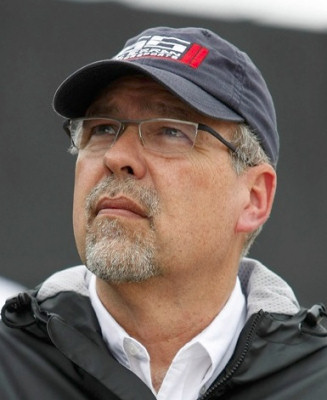 © LAT USA "I set off on a mission," he says. "Ultimately, I had the blessing of Tony George and Kevin Kalkhoven to interview all the team owners, drivers and major sponsors that were involved with both groups to try to understand what both sides were looking for and what common ground I might be able to find." Clarke spent a few months listening to many people and the experience left him with a very negative view of the sport. "I came away from the exercise personally with a firm view of how screwed up it is," Clarke grimaces. "It gave me a true, honest belief that there was no way they were going to come together. In fact, I realized it's much worse than that. Those conversations made it clear to me that the sport was going to die. I walked away from that process with a true belief that the sport had no future. "There were others trying to achieve the same goal. Mario was out doing what he could and I had some conversations with Mario about it. Really, everybody was trying to find a way to fix it." At one stage Clarke thought he was making progress but his belief quickly evaporated. "Actually, I got the two groups close together before it all fell apart," he says. "A little while later, it happened all of a sudden, but not with the plan for the future that so many people had hoped for." 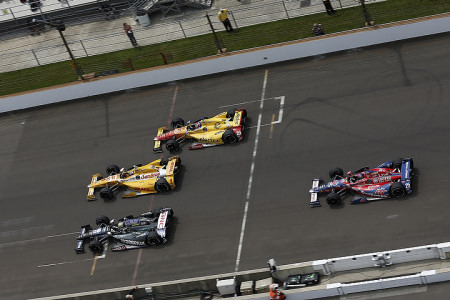 © LAT USA "All of this made me ask, what was the fundamental problem?" he remarks. "And the answer I found was that the sport was no longer being all it could be and was no longer relevant in practically every sense you could think of. "It's not relevant to the product of racing, to machinery and technology, to innovation, to entertainment or society as it exists today. To the fans who are watching, it's no longer relevant in the way it presents information that a fan or spectator requires to understand what's going on in the race. "Take whatever angle you want and it's no longer relevant. If you look at pictures of paddocks today and go back and look at picture of paddocks in the fifties and sixties, they basically look the same. Yet the rest of society and our world is drastically different. "Unfortunately, racing has gone down a road where it's only about the people who are competing in it. It's a bunch of self-serving people participating in a club activity that they enjoy." After retiring in 2008 after 27 years with Honda, Clarke spent some of his time managing Tony Kanaan, but he also began to look at the history of racing to see what he could learn to apply to the problems the sport faces today. "I started doing some research looking back at the dawn of the automobile and the beginning of racing. I looked at how it came to be and why it was successful. What I concluded was that during that time the development and evolution of the automobile changed rapidly from a product that was only available to an affluent few to something that was available to the masses. 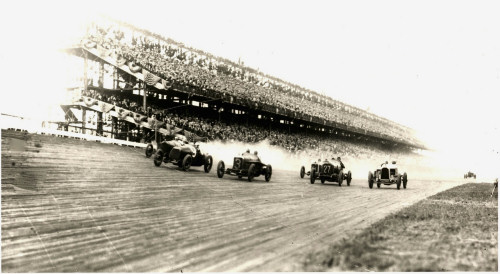 © Racemaker Press A packed house watches the start of a 200-mile AAA Championship race on the Atlantic City, NJ board track in 1927 "That got me thinking about the auto industry today. If you look around, there's not a single product in our lives that has the influence that the automobile does. Part of my education is in industrial and transportation design so I'm familiar with how the car affects our lives. It's a status symbol. It's part of your personal brand. For most of us, it's the second largest financial investment that we make. It gives people mobility and is so important to society in so many ways. "And of course, the auto industry is the third largest industry in the world when you take into consideration all the manufacturers and their suppliers all the way down the chain. It's a huge global industry so it's still as important as it was back in 1909 in terms of what it's doing to the world economy and each individual in society around the world. "All this led me to start thinking about EarthPrix. Racing can have a much larger reason and purpose to exist than just running cars around in circles and trying to entertain people in a stadium setting. It needs to be about the auto industry and its effect on society and the global economy and how it feeds and inputs other industries. "In that sense, the automobile is really now in a renaissance with green technologies and alternative fuels and electronics. With all the new technologies that go into today's automobiles, the moons have realigned, not that they ever went out of alignment. But today's automobile is more capable than ever of influencing society and the global economy." All this ruminating led Clarke to conceive EarthPrix. "The idea of EarthPrix is to make it a huge event like a World's Fair or the Olympics.," he says. "Those are huge events and that's what EarthPrix needs to be. It needs to be a Woodstock-type event, a happening that draws people from all over. 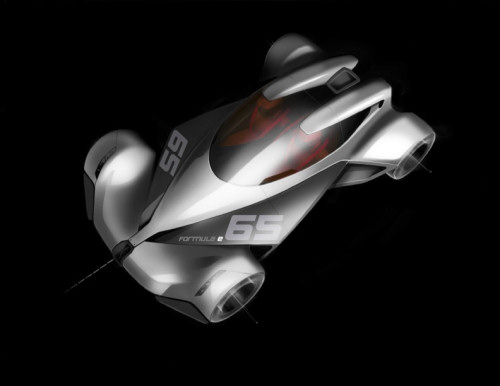 © Robert Clarke Clarke's concept of EarthPrix's automobile competition consists of five or six different contests designed to demonstrate durability, performance, fuel efficiency and styling. "One of the events would require the cars to actually drive through a city in a real urban environment where you have to drive over potholes and manhole covers and go through traffic lights and stop signs on crowded streets. "Another event would be a drag race where the vehicles would accelerate over 1,000 feet and slam on its brakes and stop as quickly as possible. Another would be a dual slalom, like a Race of Champions type of event, where you pair competing vehicles together and possibly put lay people or journalists in these vehicles to demonstrate the drivability and to communicate the experience of driving these vehicles. "One of my pet peeves because of my background in design is how ugly race cars have become. So styling is another of the competitions and the public would decide like 'America's Got Talent'. The public would vote on what's good and what's bad. "There would also be a freeway or long-distance drive on public roads where the cars would have to drive at least 200 miles, maybe up to 300 or 350 miles without refueling. "Other than the drag race and dual slalom, they're not high speed events. Each of these events is used to demonstrate the viability of the technology and help determine the specification of the vehicle." Clarke emphasizes that EarthPrix will be much more than an automobile competition.  © Robert Clarke "There would also be an expo associated with EarthPrix with things on display like wind generators to companies selling solar panels for your house in a World's Fair type of atmosphere. You would have different buildings and display areas for different technologies. Again, this would be unrelated to racing but it would be related to the auto industry." Clarke has met with many of the leading auto manufacturers to discuss his concept for EarthPrix. He says most of the manufacturers would like EarthPrix to operate as a global series with three events each year in major urban centers. "The majority of the manufacturers I met with felt that to get enough value it should be more than one event," Clarke says. "They thought it should be three events per year--one in North America, one in Asia and one in Europe." Clarke envisions a common or spec chassis for the EarthPrix car with no limits on the power source. "The format of the race cars, if you want to call them that, I want to be as flexible as possible," he comments. "I've had conversations with Dallara, Nick Wirth, McLaren and others about whether it was possible to create a safety cell or tub where you could mount virtually any type of power plant, whether it was electric, diesel or gasoline or any combination of fuel cells. "I asked them if would it matter whether you mounted the power plant on the front, the rear, or the side. And the answer was yes, it would be possible. It wouldn't be optimized for light weight and aerodynamics but it's possible a safety cell that was structurally strong could handle all these different options. "Every auto manufacturer has driven a stake in the ground saying that we believe in this or that technology. For Nissan, it's electric. For Honda, it's fuel cells. For Toyota, it's hybrids. I want the manufacturers to design cars that suit their marketing direction and their preferred technologies. I see these cars as a running concept car and as a platform for the manufacturer to use as a marketing tool." 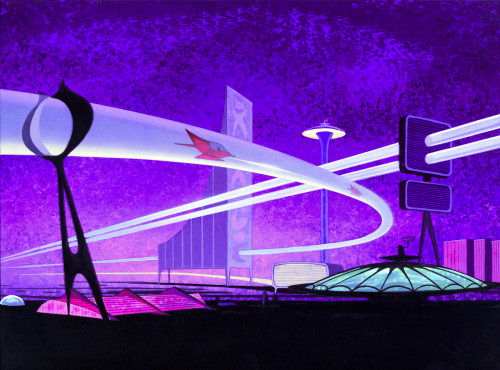 © Disney "There are no rules to the series other than you have to use this safety cell and you have to compete in a specified type and number of events," he says. "It's really each event that will control the specification of the vehicle. It's really about what the manufacturer would face in the real world of automobiles. "In the real world, there are no rules or limits set for any production automobile. There are regulations as far as safety and things like headlight and bumper height but there are no rules that say you have to have four wheels, or an engine, or a certain size. You're not told what the general specifications for any automobile have to be. The companies themselves come up with their own specifications. "Honda has HES--Honda Engineering Standard--and it's a well developed set of specifications that Honda has evolved over time that have been arrived at through trial and error as products are developed. It's an evolving dictionary or almanac that Honda uses to develop new products, and every company has these things. "So the thinking is that EarthPrix is self-policed. The committee that would regulate the series would have representatives from the different participants sit on the board to regulate themselves, much like what happens in the automobile industry today. The events and their specific challenges would determine what the preferred specification of car would be." Clarke has discussed EarthPrix with many potential major players and is convinced there's enough interest to make his concept a reality. "My background and credentials with Honda have helped get me in any door I wanted to get into. I've met with most of the manufacturers--GM, Ford, Audi, Porsche, Toyota and Honda. The manufacturers all expressed interest. At Honda I met with Honda in Japan and they basically made a commitment that if others would compete they would compete too. "I also met with the mayors of Detroit and Indianapolis, the governor of Indiana, the people at the Circuit of the Americas in Austin, and with General Electric, Google, Facebook, AOL, Yahoo and other Silicon Valley groups. I also had a great meeting with Lego. They're a great company with a tremendous brand and a market for everyone from three to ninety. 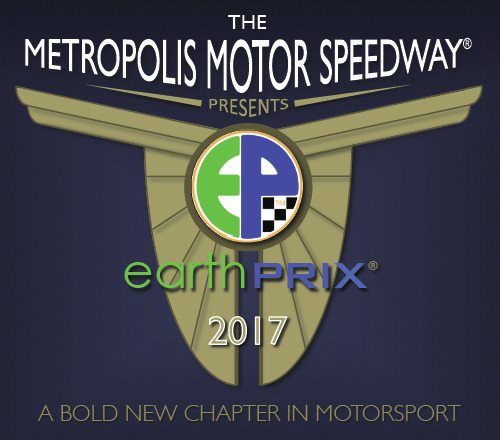 © Robert Clarke Clarke has also met with venture capitalists to see if he might be able to raise the necessary money to get EarthPrix off the ground. "My guesstimate for a budget for making this thing happen initially is $200 million," Clarke says. "Most of the venture capitalists I met with told me that raising $20 million was one thing, but $200 million is something else again." Last spring, Clarke believed the Indianapolis Motor Speedway was prepared to support EarthPrix. "I had some meetings with Jeff Belskus and Jarrod Krisiloff at the Speedway," he relates. "I had five or six meetings with them and they initially had a strong interest. I broke it down into phases and had a budget for each phase. Belskus agreed to fund the first phase with a first right of refusal to proceed to the second phase. "The first phase was to sharpen my presentation tools to prepare a full-on video to present to manufacturers and potential commercial entities and to kick-off the initial phase of designing the safety cell so the manufacturers could start the process of developing their vehicles. From my experience with Honda I knew a two-year window would be required to go from concept to product. "Belskus and I shook hands at Long Beach this past year on an agreement to fund the first phase and they spent the next six or eight weeks trying to put that agreement into a contract. But they weren't able to do that. Mark Miles was just coming in and the timing was really bad for something like this.  © LAT USA "Before I met with the people at the Speedway I met with Mitch Daniels, who was the governor of Indiana, and I met with Mayor Ballard of Indianapolis and there was very strong interest. They verbally committed to support it because racing was so important to the city and the state of Indiana. "In essence, they were looking for a tool to get more involved with the Speedway and to support the Speedway. They basically said there was money available if you can give us a reason to give it to you. "They loved the concept. They want Indianapolis to become an international urban community and attract international business. They see an opportunity to lure more of the automobile industry back to Indianapolis and bring more green industry to Indianapolis. They felt like EarthPrix was the perfect opportunity for them. "That was when I went to see Jeff and Jarrod. We talked quite a lot and made an agreement to do the deep dive but then everything fell apart. It was very disappointing and I lost the momentum we had been building. What I have to do now is regroup and pull together the critical mass of interest so I can go back to everyone I've met with and pitch them for a serious commitment. "It's an uphill battle," he adds. "But I believe in the concept and I'm doing my best to try to make it happen." EarthPrix is exactly the kind of radical thinking the hidebound sport of motor racing needs. I wish Robert Clarke the best of luck in making his brave, wide-eyed goal come to life. |
|
Auto Racing ~ Gordon Kirby
Copyright ~ All Rights Reserved |
